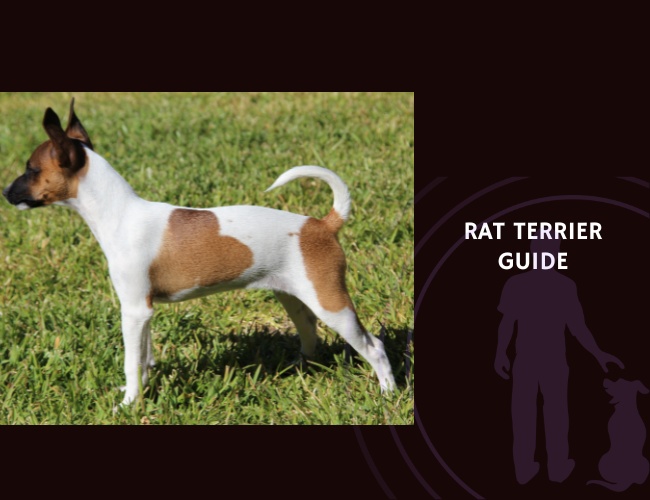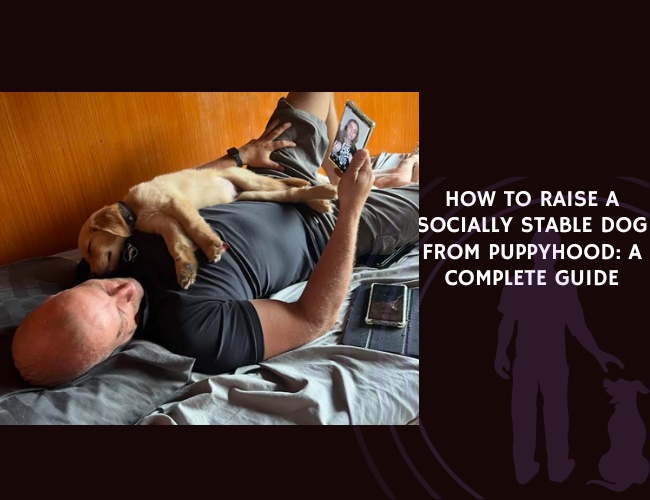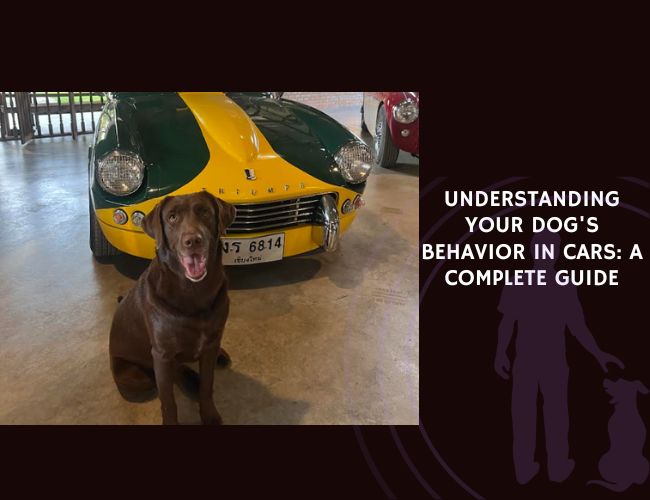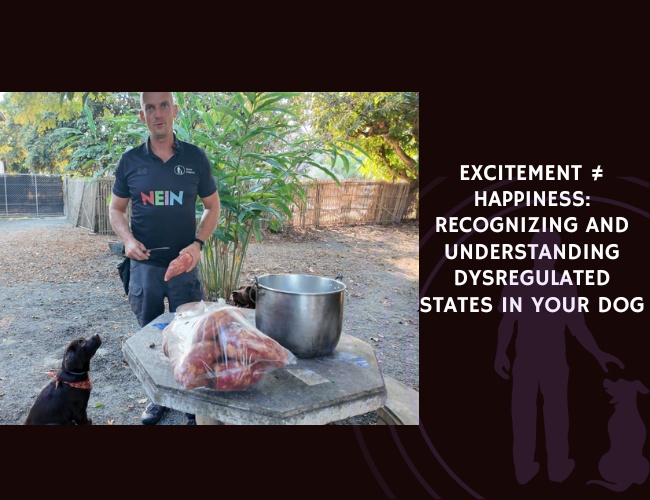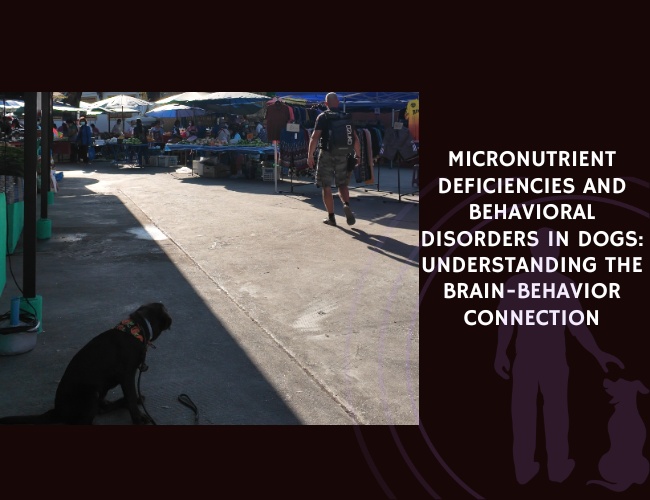Introduction: America’s Versatile Farm Heritage
Picture this: it’s the 1920s, and across American farmlands, a small but mighty dog is earning its keep by protecting grain stores, hunting vermin, and warming the hearts of farming families. This is the Rat Terrier—a breed whose name might sound unglamorous, but whose spirit, intelligence, and devotion have made them one of America’s most cherished companion dogs. Did you know that during the 1910s and 1920s, the Rat Terrier was one of the most common farm dogs in America? These versatile hunters weren’t just working dogs; they were family members who transitioned seamlessly from barn to hearth.
Today’s Rat Terrier carries that same adaptable spirit, combining the tenacity of their terrier heritage with a surprising gentleness that makes them exceptional family companions. Whether you’re drawn to their alert expressions, their compact athleticism, or their reputation as devoted family dogs, understanding the Rat Terrier means appreciating both their working heritage and their modern role as affectionate companions. Let us guide you through everything you need to know about these remarkable dogs, from their complex temperament to their specific care needs.
Character & Behavior: Understanding Your Rat Terrier’s Personality
The Working Heritage That Shapes Today’s Companion
Your Rat Terrier’s personality is deeply rooted in their fascinating development as America’s premier farm dog. These dogs weren’t created by accident—they’re the result of careful breeding that combined Smooth Fox Terriers, Manchester Terriers, Bull Terriers, Whippets, Italian Greyhounds, and Beagles. Each breed contributed specific traits that created the ultimate versatile farm companion. This diverse genetic background means your Rat Terrier inherits not just terrier tenacity, but also the speed of sight hounds and the tracking ability of scent hounds.
What does this mean for you as an owner? You’re living with a dog whose work ethic reflects generations of purposeful breeding for “speed used for controlling vermin and hunting small game such as squirrels and hares.” This isn’t just historical trivia—it directly impacts how your furry friend behaves in your home today. You might notice your Rat Terrier exhibits burst activity patterns, racing around with incredible energy before settling into surprisingly calm rest periods. This adaptation served them well on farms where they needed explosive energy for hunting, followed by patience during quiet times.
Understanding this heritage helps explain why your Rat Terrier might suddenly bolt after a squirrel during a peaceful walk, or why they seem to have an internal switch between “zoom mode” and “couch potato mode.” It’s not inconsistency—it’s centuries of breeding for versatile work patterns. 🐾
Temperament: The Terrier With a Twist
When you interact with your Rat Terrier, you’re experiencing what many describe as “the terrier personality with a softer edge.” The temperament of a Rat Terrier combines energetic enthusiasm, sharp intelligence, and genuine affection in ways that might surprise those familiar with typical terrier breeds. Unlike many of their terrier cousins who can be described as independent to a fault, Rat Terriers show remarkable people-orientation and eagerness to please.
Social sensitivity sets Rat Terriers apart from many terrier breeds. Your dog likely watches you closely, picking up on subtle mood changes and adjusting their behavior accordingly. This sensitivity makes them wonderfully trainable and easier to live with than many expect from a terrier breed. However, this same sensitivity means that extensive socialization from an early age isn’t just recommended—it’s critical for developing a well-adjusted adult dog. Without proper early experiences, that natural caution with strangers can develop into shyness or reactivity.
Family bonds run deep with Rat Terriers. You’ll find your dog forms intense attachments to family members, often choosing a favorite person while still maintaining affection for everyone in the household. This loyalty manifests in various ways: following you from room to room, alerting you to anything unusual, and showing genuine excitement at family reunions. They’re the type of dog who remembers friends and family members even after long absences, greeting them with enthusiastic recognition.
Intelligence and Problem-Solving: A Blessing and a Challenge
Living with a Rat Terrier means sharing your home with a canine genius—but as any owner will tell you, intelligence in dogs is a double-edged sword. Your Rat Terrier’s cognitive abilities stem from their need to outsmart prey, navigate farm environments independently, and work with minimal human direction. This translates to a modern companion who can learn complex tricks, solve puzzle toys in record time, and yes, figure out how to open doors or escape from yards.
“She is intelligent, but stubborn. She is an escape artist, likely to wander”—this common observation captures the Rat Terrier paradox perfectly. Their intelligence manifests in both delightful and challenging ways. You might find your Rat Terrier has memorized your daily routine, anticipating walk times or knowing exactly when you usually prepare their meals. They excel at tasks requiring persistence and independent thinking, traits essential for their original vermin control work.
But here’s what you need to know: this intelligence combined with high energy can lead to mischief if not properly channeled. A bored Rat Terrier is an inventive Rat Terrier, and their inventions might include redesigning your garden, creating new exits in your fence, or discovering that couch cushions contain interesting stuffing. The key is staying one step ahead through training, enrichment, and understanding that your dog needs mental challenges as much as physical exercise. 🧠
Prey Drive: Living With a Natural Hunter
Let’s address the elephant—or rather, the rat—in the room. Your Rat Terrier was literally bred to hunt and eliminate vermin, and this instinct doesn’t simply disappear because they live in a modern home. “Rat Terriers were bred as ratters, most of them do have a naturally high prey drive and love to chase squirrels or other small intruders.” This isn’t a behavioral problem—it’s a fundamental aspect of who they are.
This prey drive affects daily life in various ways. During walks, your normally obedient companion might suddenly become deaf to your calls when spotting a squirrel. In the yard, they might spend hours stalking along fence lines, watching for any small movement. Inside, they might treat squeaky toys with an intensity that reveals their hunting heritage—”they like stuffed toys and will gleefully and quickly ‘kill’ the toy and pull all its stuffing out.”
Understanding and managing this drive, rather than trying to eliminate it, leads to harmony. Many Rat Terrier owners successfully maintain households with cats, but introductions must be careful and supervised. Small pets like hamsters, gerbils, or rabbits typically aren’t suitable companions for Rat Terriers unless kept completely separated. The key is recognizing that this isn’t aggression or meanness—it’s hardwired instinct that served an important purpose for generations.
Vocalization & Communication: How Your Rat Terrier “Talks”
The Alert System: Understanding Barking Patterns
Your Rat Terrier’s voice serves as a sophisticated communication system, and understanding their vocalization patterns helps you respond appropriately to their needs. As natural watchdogs, Rat Terriers use their voice primarily as an alert system, distinguishing between routine neighborhood activity and genuine concerns. You’ll quickly learn to differentiate between their “someone’s at the door” bark (sharp, repetitive, urgent) and their “I see a squirrel” bark (higher pitched, often accompanied by whining).
Their territorial behavior manifests primarily through alert barking rather than aggression. This means your Rat Terrier might announce every delivery person, but they’re more likely to retreat and observe than confront once you’ve acknowledged the alert. Many owners appreciate this balance—you get an effective alarm system without excessive aggression. However, without proper training, alert barking can become excessive, especially in apartments or close neighborhoods.
Body language accompanies vocalizations in meaningful ways. A relaxed tail wag while barking usually indicates excitement rather than threat. Raised hackles with deep barking suggests genuine concern. Understanding these combined signals helps you respond appropriately—sometimes your dog needs reassurance, sometimes they need redirection, and sometimes they’re simply sharing exciting news about the neighbor’s cat.
Emotional Expression Through Sound
Beyond functional barking, Rat Terriers possess a remarkable range of vocalizations that express their emotional states. You might hear contented grumbles during belly rubs, excited yips during play, or even a distinctive “talking” sound when they’re trying to convince you it’s dinner time. Some Rat Terriers develop a vocabulary of sounds specific to their family’s routines—a particular whine for “I need to go outside,” a different one for “my toy is stuck under the couch.”
This emotional expression through sound reflects their deep social bonds and desire to communicate with their human family. Unlike some more independent breeds, Rat Terriers actively seek verbal interaction with their owners. They might “answer” when you talk to them, creating conversational exchanges that strengthen your bond. This communicative nature makes them wonderful companions for people who enjoy interactive relationships with their dogs. 🧡
Training & Education: Channeling Intelligence Into Good Behavior
Early Socialization: The Foundation of Success
The path to a well-adjusted Rat Terrier begins in puppyhood, with proper socialization being absolutely crucial for this sensitive breed. “Proper socialization of a Rat Terrier puppy includes exposing the animal to a wide variety of people and places, particularly during the first three months of life.” This isn’t just about preventing problems—it’s about unlocking your dog’s full potential as a confident, adaptable companion.
The critical window from 3 to 16 weeks shapes your Rat Terrier’s worldview. During the peak acceptance period of 5-7 weeks, puppies are virtually fearless and ready to explore the world. This is when exposure to different textures, sounds, surfaces, and experiences creates neural pathways that last a lifetime. Your puppy should meet at least 100 people during this period—people of various ages, wearing different clothes, using mobility aids, wearing hats or uniforms. Each positive interaction builds confidence and reduces the likelihood of fear-based reactions later.
But here’s what many owners don’t realize: socialization doesn’t end at 16 weeks. The juvenile period from 3-6 months requires consistent training and continued exposure to new experiences. Rat Terriers who miss this extended socialization often develop fearfulness or reactivity that’s challenging to overcome. Think of socialization as an investment—every positive experience during puppyhood pays dividends throughout your dog’s life.
The first fear period (7-9 weeks) requires special care. During this time, traumatic experiences can have lasting impacts, so interactions should be positive but not overwhelming. Many breeders recognize this and keep puppies until 10-12 weeks, ensuring they navigate this sensitive period in a familiar environment. If you bring home a puppy during this time, focus on gentle, positive experiences rather than overwhelming adventures.
Positive Reinforcement: Speaking Your Rat Terrier’s Language
“Positive reinforcement is a highly effective training technique that works particularly well with Rat Terriers.” This isn’t just trainer rhetoric—it’s based on understanding how these intelligent, sensitive dogs learn best. Your Rat Terrier’s combination of intelligence and eagerness to please makes them excellent candidates for reward-based training, but their independent streak means harsh corrections often backfire.
Start training in a quiet, distraction-free environment. Your Rat Terrier’s busy mind needs focus, and too many distractions initially prevent learning. Use clear, consistent verbal cues paired with hand signals—this dual communication system helps your dog understand even in noisy environments. Keep sessions short and fun, about 5 to 10 minutes each. This isn’t because Rat Terriers can’t concentrate longer; it’s because their intelligent minds benefit from frequent, varied training rather than lengthy drills.
Food motivation typically runs high in Rat Terriers, making treats powerful training tools. However, don’t underestimate play rewards—many Rat Terriers will work just as hard for a quick game of tug or the chance to “kill” a squeaky toy. The key is discovering what motivates your individual dog and using it strategically. High-value rewards for difficult behaviors, standard rewards for known behaviors, and life rewards (like door opening or leash attachment) for everyday compliance.

Impulse Control: The Terrier Challenge
Teaching impulse control to a breed designed for quick, independent decision-making requires patience and creativity. Essential commands like “sit,” “stay,” and especially “leave it” aren’t just tricks—they’re safety tools that can prevent your Rat Terrier from bolting after prey or grabbing something dangerous. The challenge is that every fiber of your dog’s being says “chase that squirrel NOW,” while you’re asking them to stop and think.
“Leave it” might be the most important command you teach your Rat Terrier. Start with low-value items and gradually increase difficulty. Place a treat on the floor, cover it with your hand, and wait for your dog to stop trying to get it. The moment they back off or look away, mark the behavior (with a click or “yes!”) and reward from your other hand. This teaches them that ignoring something leads to getting something better—a concept that goes against their hunting instincts but can be learned through repetition.
Settle behaviors and calm commands help your Rat Terrier learn to control their energy. Teaching a “place” or “mat” command gives them a default behavior when excitement levels rise. Practice during calm times first, rewarding gradually longer periods of relaxation. Many owners find that teaching their Rat Terrier to “settle” on command transforms their household management, especially when guests arrive or during dinner time.
Channeling Hunting Instincts: Modern Applications
Rather than fighting against your Rat Terrier’s hunting instincts, modern training embraces and redirects them. “Barn Hunt organizations set up a safe space for dogs to track live rats within a maze of hay bales”—this sport was literally designed for dogs like yours. Even if you never compete, understanding the training progression helps channel instincts positively.
Scent work provides mental stimulation that satisfies hunting drives without actual hunting. Start simple: hide treats around the house and encourage searching. Graduate to specific scents in containers, teaching your dog to indicate finds with a sit or paw touch. This builds into complex search patterns that mirror natural hunting behavior but under your control. Many Rat Terrier owners report that regular scent work sessions create calmer, more satisfied dogs.
The training progression for hunting work includes scent introduction using controlled exposure, building search patterns and persistence, teaching indication behaviors, developing teamwork with handlers, and generalizing skills to various environments. Each step builds confidence while maintaining control—crucial for a breed that can become single-minded when hunting instincts activate.
Off-Leash Reliability: Managing Expectations
Let’s have an honest conversation about off-leash reliability with Rat Terriers. “Due to their strong prey drive, teaching reliable off-leash obedience requires consistency, positive reinforcement, and a strong foundation of basic commands. However, complete off-leash reliability is challenging to achieve, and many Rat Terriers should never be trusted off-leash in unfenced areas.”
This doesn’t mean your Rat Terrier can’t enjoy freedom—it means being smart about when and where you allow it. Recall training should begin in controlled environments with minimal distractions. Use the highest value rewards you have (for many Rat Terriers, this might be a special toy or extra-special treat). Practice with increasing distractions gradually, but always set your dog up for success. Never punish returning, regardless of how long it took—you want coming back to always be the best choice your dog can make.
Many successful Rat Terrier owners use long lines (30-50 foot leashes) to give their dogs freedom while maintaining control. This allows practice in real environments without risk. Some owners find that their Rat Terriers become reliable in specific contexts—like hiking trails they know well—but never achieve true reliability in all situations. This isn’t failure; it’s realistic management based on understanding your dog’s nature. 🐾
Performance & Activities: Enriching Your Rat Terrier’s Life
Dog Sports: Where Rat Terriers Shine
Your Rat Terrier’s athletic ability and intelligence make them natural candidates for various dog sports. “They excel in conformation, agility, obedience, rally obedience, terrier racing, earthdog, barn hunt, and lure coursing.” This isn’t just about ribbons and titles—it’s about providing outlets that satisfy their physical and mental needs while strengthening your bond.
Agility capitalizes on your Rat Terrier’s speed and athleticism. These dogs often excel at agility, combining their natural athleticism with their desire to work with you. The mental challenge of remembering courses and the physical outlet of running and jumping creates tired, happy dogs. Start with foundation skills like targeting, body awareness, and basic obstacles before advancing to full courses. Many Rat Terriers show particular talent for tight turns and quick direction changes—skills that served their ancestors well when hunting in barns and fields.
Barn Hunt deserves special mention as it’s practically designed for Rat Terriers. Dogs search for safely contained rats hidden in hay bale mazes, combining scent work, climbing, and problem-solving. This sport satisfies hunting instincts in a controlled, humane way. Even if you don’t compete formally, setting up simple hunting games at home provides similar satisfaction. Hide toys or treats in cardboard boxes, create tunnel systems from blankets, or build simple hay bale configurations if you have space.
Mental Enrichment: Exercising the Mind
Physical exercise alone won’t tire your intelligent Rat Terrier—mental stimulation is equally crucial. “Like most active and intelligent breeds, Rat Terriers tend to be happier when they receive a great deal of mental stimulation and exercise.” Without adequate mental outlets, even a physically tired Rat Terrier might develop destructive behaviors, excessive barking, or anxiety.
Puzzle toys should be part of your daily routine. Start with simple treat-dispensing balls and progress to complex puzzle boards. Rotate toys to maintain novelty—your smart Rat Terrier will quickly master puzzles if used repeatedly. Consider making DIY puzzles from cardboard boxes, paper towel rolls, and other safe household items. The act of problem-solving, not just getting treats, provides satisfaction.
Trick training engages problem-solving abilities while building communication between you and your dog. Rat Terriers often enjoy learning complex tricks that challenge their intelligence. Chain behaviors together—teaching your dog to fetch specific items by name, put toys away, or even “help” with household tasks. These activities provide mental stimulation while creating practical skills. The key is keeping sessions positive and ending before your dog becomes frustrated or bored.
Exercise Requirements: Balancing Energy and Rest
Your Rat Terrier needs 30-60 minutes of daily exercise, but understanding how to structure this activity makes all the difference. Remember their heritage of burst activity followed by rest? Structure exercise to mirror these patterns. Instead of one long, steady walk, consider two or three shorter, more intense sessions. A morning walk with sniffing opportunities, an afternoon play session, and an evening training or trick session might better suit your dog’s natural rhythms.
Weather considerations matter for this short-coated breed. Rat Terriers handle heat reasonably well but may need coats in cold weather. Their thin coat and relatively low body fat mean they chill easily. In winter, shorter, more frequent outings might be necessary. In summer, early morning and evening activities avoid heat stress. Always watch for signs of discomfort—shivering in cold or excessive panting in heat signals it’s time to head inside.
Indoor exercise becomes crucial during weather extremes. Set up obstacle courses using household items, play hide-and-seek, or teach new tricks. Many Rat Terriers enjoy “zoomies” sessions where they race around the house—instead of discouraging this, create safe zoom zones by removing obstacles and letting them burn energy naturally.
Boundless. Agile. Tireless.
Heritage fuels their drive, giving the Rat Terrier a rare blend of speed, agility, and determination. They move with purpose, whether chasing a ball across the yard or zeroing in on the faintest rustle in the grass. This isn’t random energy—it’s the direct legacy of a dog bred for work, now adapted to modern life.
Training thrives on variety, engaging both their sharp mind and their athletic body. Sessions that mix obedience, scent work, and interactive games keep their focus high and their spirit invested. Repetition without challenge leads to boredom, but novel tasks spark their curiosity and sustain their enthusiasm.
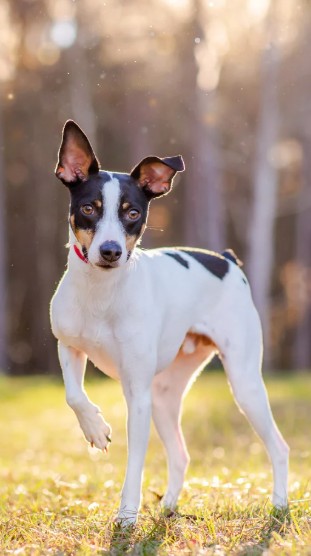
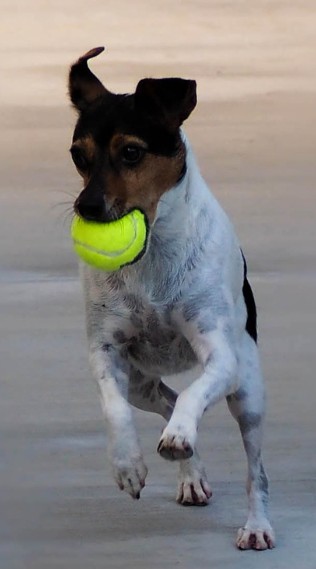
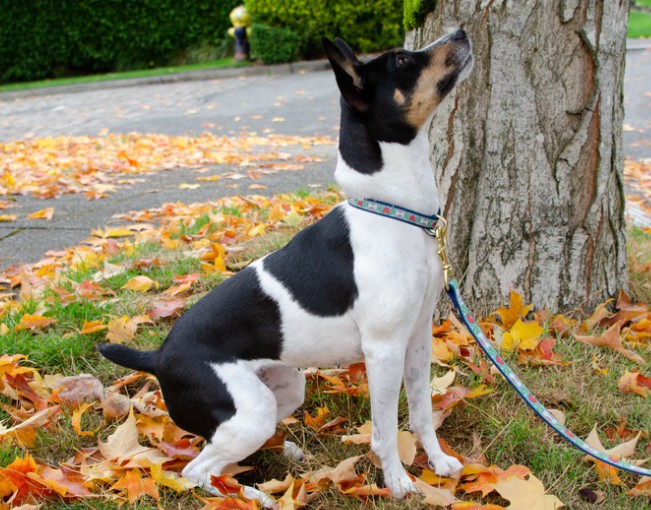
Loyalty defines their bond, shaping a dog who thrives on connection and shared routines. They follow their people from room to room, tune in to subtle emotional cues, and often become a constant shadow. In return, they expect consistency, guidance, and the reassurance that they are part of your inner circle.
Nutritional Recommendations: Fueling Your Active Companion
Foundation Nutrition: Quality Matters
“A balanced diet of high-quality dog food is best for a Rat Terrier. Opt for commercially available food approved by the Association of American Feed Control Officials (AAFCO).” But what does “high-quality” really mean for your specific dog? Active Rat Terriers require approximately 470 calories daily for moderate activity, though individual metabolism varies significantly. Some Rat Terriers maintain weight on less, while others need more despite similar activity levels.
The macronutrient balance matters as much as calories. Your Rat Terrier benefits from 25-30% protein from high-quality animal sources. This higher protein level supports their muscle mass and active lifestyle. Fat content of 12-15% provides concentrated energy and supports coat health—remember, these dogs were working athletes, and their nutritional needs reflect that heritage. Moderate carbohydrates offer sustained energy, while 3-5% fiber supports digestive health.
Feeding schedules impact behavior and health. Adult Rat Terriers typically do best with twice-daily feeding rather than free-feeding. This schedule maintains stable blood sugar, reduces begging behavior, and allows you to monitor appetite changes that might signal health issues. Some owners find that puzzle feeders or slow-feed bowls provide mental stimulation while preventing gulping, which can lead to digestive upset.
Life Stage Nutrition: Adapting to Changing Needs
Your Rat Terrier’s nutritional needs evolve throughout their life, and understanding these changes helps maintain optimal health. Puppies require higher protein levels (28-32%) to support rapid growth and development. DHA supplementation supports brain development during this crucial period. Frequent meals—three to four times daily until six months—accommodate small stomachs and high energy needs. Be careful not to overfeed; rapid growth can stress developing joints.
Adult Rat Terriers (1-7 years) need maintenance nutrition focused on sustaining energy and preventing weight gain. The protein can decrease slightly to 22-26%, but quality remains crucial. This is when many owners must become vigilant about weight management. Your Rat Terrier’s efficient metabolism, developed for farm life with variable food availability, can lead to weight gain in our treat-rich pet environment.
Senior Rat Terriers (8+ years) benefit from adjusted nutrition supporting aging bodies. Joint support becomes crucial—look for foods with added glucosamine and chondroitin. Antioxidants like vitamins E and C support cognitive health. Calorie needs often decrease as activity levels drop, but protein quality becomes even more important to maintain muscle mass. Some seniors benefit from slightly increased protein (26-28%) if kidney function remains healthy.
Supplements and Special Considerations
Given their predisposition to patellar luxation and potential hip issues, joint supplementation deserves special attention. Glucosamine and chondroitin support cartilage health, while omega-3 fatty acids provide anti-inflammatory effects. MSM (methylsulfonylmethane) supports joint flexibility. Start these supplements early as prevention rather than waiting for problems to develop.
Coat and skin health reflects internal nutrition. Despite their short coat, Rat Terriers benefit from omega-3 and omega-6 fatty acids in proper ratios. If your dog’s coat seems dull or skin appears dry, consider supplementing with fish oil. Vitamin E supports skin integrity, biotin adds coat shine, and zinc aids skin healing. However, always consult your veterinarian before adding supplements—more isn’t always better, and some supplements can interact with medications or cause imbalances.
Some Rat Terriers show food sensitivities manifesting as itching, ear infections, or digestive upset. Common triggers include chicken, beef, wheat, or corn. If you suspect sensitivities, work with your veterinarian on an elimination diet rather than randomly switching foods. Grain-free diets have become popular but carry potential cardiac risks—choose carefully and based on actual need rather than trends. 🧡

Health Concerns: Preventive Care for a Long Life
Dental Health: The Small Dog Challenge
Small breeds like Rat Terriers face particular susceptibility to periodontal disease, making dental care a crucial aspect of their health management. Those compact jaws mean teeth crowd together, creating perfect spaces for bacteria and plaque accumulation. By age three, most dogs show signs of dental disease, but Rat Terriers often develop issues earlier without preventive care.
Daily brushing might seem excessive, but it’s the gold standard for preventing dental disease. Start slowly, letting your dog taste the toothpaste (never use human toothpaste—xylitol is toxic to dogs). Progress to touching teeth with your finger, then introducing the brush. Many Rat Terriers learn to tolerate or even enjoy brushing when it’s associated with positive experiences. If daily brushing proves impossible, aim for at least three times weekly.
Professional cleanings become necessary even with excellent home care. Your veterinarian can identify problems below the gum line that home care can’t address. Don’t wait for visible tartar or bad breath—by then, damage has already occurred. Annual dental examinations and cleanings as needed can prevent tooth loss and systemic health issues linked to dental disease. Remember, bacteria from diseased teeth can affect heart, liver, and kidney function.
Orthopedic Concerns: Protecting Active Joints
Your Rat Terrier’s athletic nature makes orthopedic health particularly important. Patellar luxation—where the kneecap dislocates from its normal position—commonly affects small breeds including Rat Terriers. You might notice occasional skipping or holding up a rear leg during walks. While mild cases might need only monitoring, severe luxation requires surgical correction. Maintaining proper weight and muscle tone helps stabilize joints.
Legg-Calvé-Perthes Disease, though less common, can affect young Rat Terriers. This condition involves deterioration of the hip joint’s blood supply, leading to pain and lameness. Early signs include limping, reluctance to bear weight, and muscle atrophy. Caught early, surgical treatment offers excellent outcomes, reinforcing the importance of regular veterinary examinations during your dog’s first two years.
Hip dysplasia, while less common in Rat Terriers than larger breeds, can still occur. Regular, moderate exercise builds supporting muscles, while avoiding repetitive high-impact activities during puppyhood protects developing joints. If your young Rat Terrier shows reluctance to climb stairs, difficulty rising, or bunny-hopping gait, consult your veterinarian promptly.
Eye Health: Genetic Considerations
Rat Terriers can inherit several eye conditions requiring vigilance. Progressive Retinal Atrophy (PRA) causes gradual vision loss, typically beginning with night blindness. While no treatment exists, affected dogs adapt remarkably well to vision loss in familiar environments. Genetic testing can identify carriers, helping make informed breeding decisions.
Primary Lens Luxation (PLL) involves displacement of the eye’s lens, potentially causing glaucoma and vision loss. This painful condition requires immediate veterinary attention. Watch for signs like squinting, tearing, or cloudiness in the eye. Genetic testing also available for PLL helps identify at-risk dogs. Regular eye examinations, especially for breeding dogs, help identify issues early when treatment options remain available.
Cardiac Health and Longevity
Mitral valve disease commonly develops in middle-aged to senior Rat Terriers. This condition involves deterioration of the heart valve, leading to regurgitation and eventual heart failure. Early detection through annual auscultation allows for management that can significantly extend quality life. Signs include coughing (especially at night), exercise intolerance, or rapid breathing at rest.
The good news? “Rat Terriers benefited from genetic diversity due to outcrossing. Lifespan: 16-19 years on average.” This impressive longevity reflects their hybrid vigor—the genetic diversity from their mixed heritage provides resilience against many inherited diseases. Your commitment to preventive care, proper nutrition, and regular veterinary visits can help your Rat Terrier achieve this impressive lifespan while maintaining quality of life.
Lifestyle & Environment: Creating the Perfect Home
Adaptability: From Farm to Apartment
One of the Rat Terrier’s greatest strengths is adaptability to various living situations. These dogs can thrive in city apartments or rural farms, provided their energy and mental stimulation needs are met. “Adaptable to city or rural living if energy needs are met. Secure fencing is important.” This flexibility makes them suitable for various lifestyles, but success requires understanding and meeting their needs regardless of your living situation.
Apartment living with a Rat Terrier is entirely possible, but requires commitment to daily exercise and mental stimulation. Their alert nature means they’ll notice every hallway sound, potentially leading to barking issues without proper training. Focus on teaching a “quiet” command early, and provide plenty of enrichment to prevent boredom-induced barking. Many apartment-dwelling Rat Terriers become perfect urban companions, accompanying owners to cafes, stores, and social gatherings.
Suburban and rural settings offer different advantages and challenges. More space doesn’t automatically mean less work—a bored Rat Terrier in a big yard will find their own entertainment, possibly including excavation projects or fence escapes. Secure fencing becomes crucial; these dogs can jump surprisingly high and squeeze through impossibly small spaces when motivated. Consider your Rat Terrier’s hunting instincts when choosing fencing—they need barriers that prevent both jumping over and digging under.
Family Integration: Children and Other Pets
“Generally friendly with children and other dogs; supervision recommended with small pets.” Your Rat Terrier can become a wonderful family dog, but success requires proper introductions and ongoing management. With children, Rat Terriers often form deep bonds, becoming protective and playful companions. Their size makes them less likely to accidentally knock over toddlers, while their energy matches older children’s play styles.
However, teach children to respect your dog’s space and read canine body language. Rat Terriers, despite their devotion, have limits. They might not tolerate ear pulling or rough handling that larger breeds might ignore. Supervise interactions between dogs and young children, teaching both appropriate behavior. Many Rat Terriers become children’s best friends, sleeping in their beds and participating in all activities.
Multi-pet households require careful consideration. Rat Terriers typically coexist well with other dogs, especially when raised together. Their play style can be intense—they enjoy chase games and wrestling—so match them with similarly energetic companions. Cat relationships vary significantly; some Rat Terriers live peacefully with cats, while others never overcome prey drive. Success usually requires raising them together from puppyhood or very careful, gradual introductions.
Small pets like rabbits, guinea pigs, or hamsters typically aren’t suitable companions for Rat Terriers unless completely separated. Even the gentlest Rat Terrier might not resist instinct if a hamster escapes its cage. This isn’t a character flaw—it’s acknowledging and respecting your dog’s nature.
Climate Considerations: Comfort in All Seasons
“Handle heat well; may need coats in cold weather”—this simple statement has significant implications for daily care. Your Rat Terrier’s short, smooth coat provides minimal insulation, making them sensitive to temperature extremes. In cold weather, they’ll need protective clothing for extended outdoor time. This isn’t about fashion—it’s about preventing hypothermia in a breed with minimal body fat and thin coat.
Choose practical over pretty when selecting cold-weather gear. Look for coats covering the chest and belly, areas where heat loss is greatest. Some Rat Terriers also benefit from boots in snow or on salted sidewalks. Introduce clothing gradually and positively—many dogs initially resist wearing clothes but accept them when associated with beloved outdoor activities.
Heat tolerance is generally better, but don’t assume your Rat Terrier is immune to heat stress. Their higher metabolism and active nature mean they can overheat during intense activity. Provide plenty of water, shade, and cooling opportunities during summer months. Many Rat Terriers enjoy kiddie pools or sprinklers for cooling off. Watch for excessive panting, drooling, or lethargy—signs that it’s time to cool down.
The Ideal Owner Profile: Are You a Match?
Success with a Rat Terrier requires honest self-assessment. These dogs thrive with active, engaged owners who can provide consistent exercise, training, and mental stimulation daily. You don’t need to be an athlete, but you should enjoy daily walks and interactive play. More importantly, you need to appreciate and work with terrier traits rather than against them.
Time commitment extends beyond basic care. Your Rat Terrier needs interaction, training, and enrichment throughout their life. They’re not dogs who contentedly spend all day alone while you work long hours. If your lifestyle involves extensive travel or long work days, consider whether you can provide adequate companionship through dog walkers, daycare, or family members.
The ideal Rat Terrier owner appreciates intelligence and independence while maintaining patience for training. You should find their antics amusing rather than frustrating, understanding that the same traits making them challenging also make them entertaining. If you want a dog who follows commands unquestioningly, a Rat Terrier might frustrate you. If you appreciate a thinking partner who keeps you on your toes, you’ve found your match.
Senior Care: Golden Years With Your Rat Terrier
Age-Related Changes: What to Expect
As your Rat Terrier enters their senior years (typically around 8-10 years), you’ll notice gradual changes requiring adjusted care. The good news is that many Rat Terriers remain active and playful well into their teens, thanks to their genetic diversity and typically robust health. However, being attentive to age-related changes ensures you can support your dog through this life stage.
Physical changes might include graying muzzle, decreased muscle mass, and slight cognitive changes. Your once-tireless hunter might prefer shorter walks with more sniffing time. They might sleep more deeply and take longer to wake up. These changes are normal, but sudden dramatic shifts warrant veterinary consultation. The key is distinguishing normal aging from treatable conditions.
Sensory changes often occur gradually. Hearing loss might manifest as selective deafness—your dog doesn’t hear you calling but immediately responds to the treat bag rustling. Vision changes might include cloudiness (often normal lenticular sclerosis rather than cataracts) or difficulty seeing in dim light. Adapt your communication style: use hand signals for deaf dogs, verbal cues for vision-impaired dogs, and maintain consistent furniture placement to help navigation.
Maintaining Quality of Life
Senior Rat Terriers benefit from adjusted exercise routines that maintain fitness without causing strain. Replace long runs with multiple shorter walks. Swimming provides excellent low-impact exercise if your dog enjoys water. Mental stimulation remains crucial—senior dogs can learn new tricks, and training provides cognitive exercise that might slow mental decline.
Comfort modifications make daily life easier for aging joints. Provide orthopedic bedding supporting arthritic joints. Ramps or steps help access favorite furniture without jumping. Raised food bowls reduce neck strain. Non-slip rugs prevent falls on slippery floors. These simple changes significantly impact comfort and mobility.
Regular veterinary care becomes even more critical in senior years. Bi-annual examinations allow early detection of age-related conditions. Blood work can identify organ function changes before clinical signs appear. Dental care remains important—infected teeth cause pain and stress organs already working harder with age. Don’t assume changes are “just old age”—many conditions are treatable, significantly improving quality of life. 🐾
Conclusion: Is the Rat Terrier Right for You?
After exploring every aspect of Rat Terrier ownership, from their fascinating farm dog heritage to their specific care needs, you’re now equipped to make an informed decision about whether this remarkable breed fits your lifestyle. The Rat Terrier isn’t just a pet—they’re a commitment to sharing your life with an intelligent, energetic, and devoted companion who will keep you entertained, active, and occasionally challenged for the next 16-19 years.
Let’s revisit the key points that make Rat Terriers unique. You’re considering a dog whose intelligence rivals any breed, whose loyalty runs deep, and whose energy requires daily outlets. They’re not the easiest dogs—their independence and prey drive require patient training and management. But for the right owner, these same traits make them endlessly entertaining and rewarding companions. Their adaptability means they can thrive anywhere from city apartments to rural farms, as long as their physical and mental needs are met.
The perfect Rat Terrier owner is someone who appreciates intelligence and independence, enjoys daily activity and interaction, has time for training and enrichment, can provide secure containment and supervision, and sees terrier traits as features, not bugs. You should be prepared for a dog who might outsmart your training occasionally, who will alert you to every squirrel in the neighborhood, and who will become so devoted that leaving them becomes difficult. If this sounds like a challenge you’re ready to embrace, a Rat Terrier might be your perfect match.
Consider your lifestyle honestly. Can you provide 30-60 minutes of daily exercise? Will you enjoy training sessions that challenge both you and your dog? Can you laugh when your Rat Terrier figures out how to open doors or finds creative ways to access countertops? Do you have secure fencing or the commitment to leashed walks only? Are you prepared for potential veterinary costs, including dental care and possible orthopedic issues? If you’re answering yes, you’re likely ready for the Rat Terrier adventure.
Remember, choosing a dog breed isn’t just about what you want—it’s about what you can provide. Rat Terriers give their whole hearts to their families, and they deserve owners who understand and appreciate their unique nature. They’re not for everyone, but for those who match well with their needs, Rat Terriers provide unparalleled companionship, entertainment, and devotion.
Whether you’re drawn to their American heritage, their versatile abilities, or simply their expressive faces and compact size, remember that a Rat Terrier is more than the sum of their traits. They’re individuals with unique personalities, quirks, and preferences. The breed characteristics we’ve discussed provide a framework, but your individual Rat Terrier will surprise and delight you in ways you can’t predict.
If you’ve decided a Rat Terrier is right for you, your next steps involve finding a reputable breeder or rescue organization, preparing your home with secure fencing and enrichment opportunities, and starting your education about positive training techniques. Connect with other Rat Terrier owners through breed clubs or online communities—they’re invaluable sources of support and advice.
The journey with a Rat Terrier isn’t always easy, but it’s never boring. These remarkable dogs bring energy, intelligence, and devotion that transform houses into homes and owners into devoted Rat Terrier enthusiasts. If you’re ready for a companion who will challenge you, make you laugh, and love you with fierce loyalty, then yes—the Rat Terrier might just be your perfect match. Welcome to the wonderful world of Rat Terrier ownership. Your adventure is about to begin! 🧡

